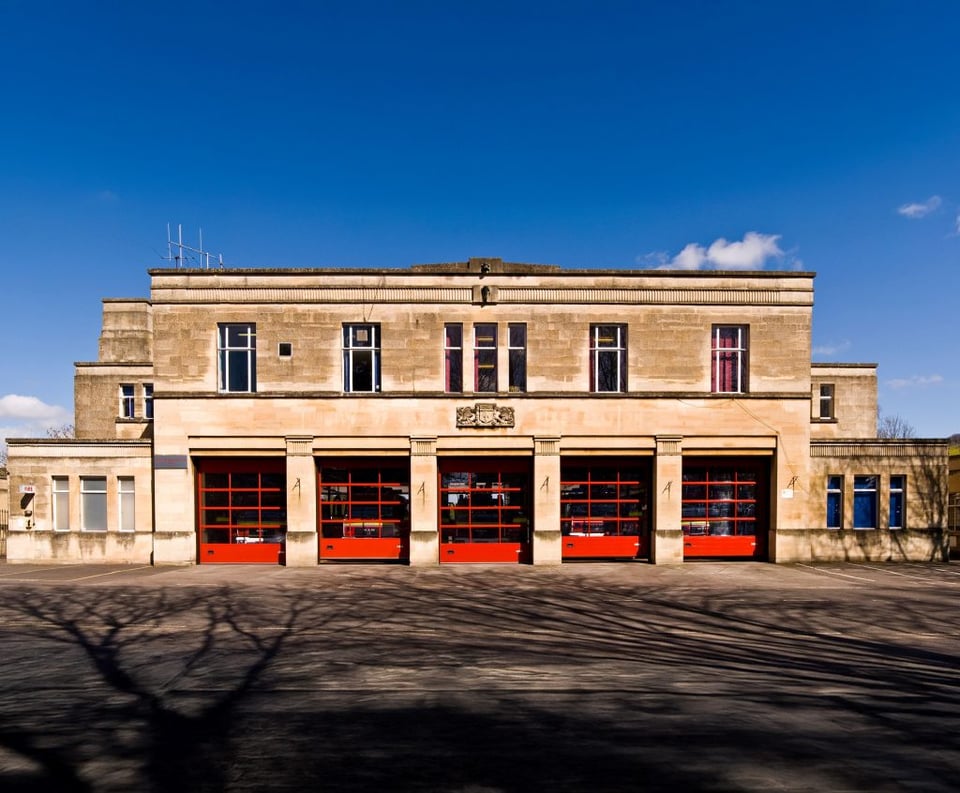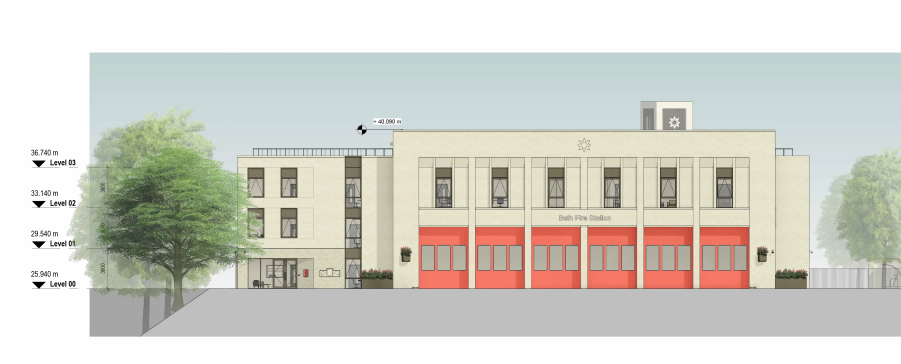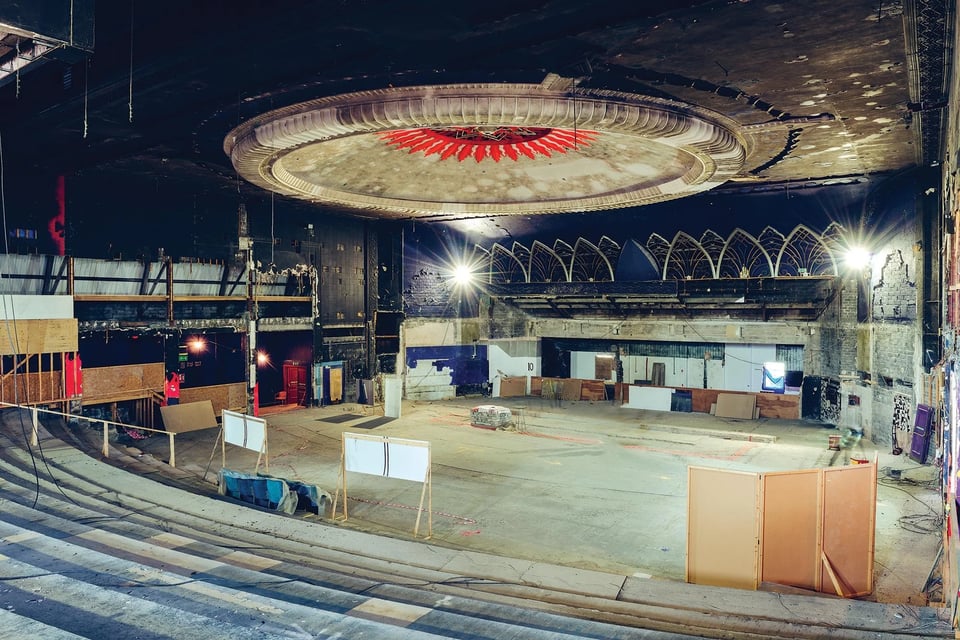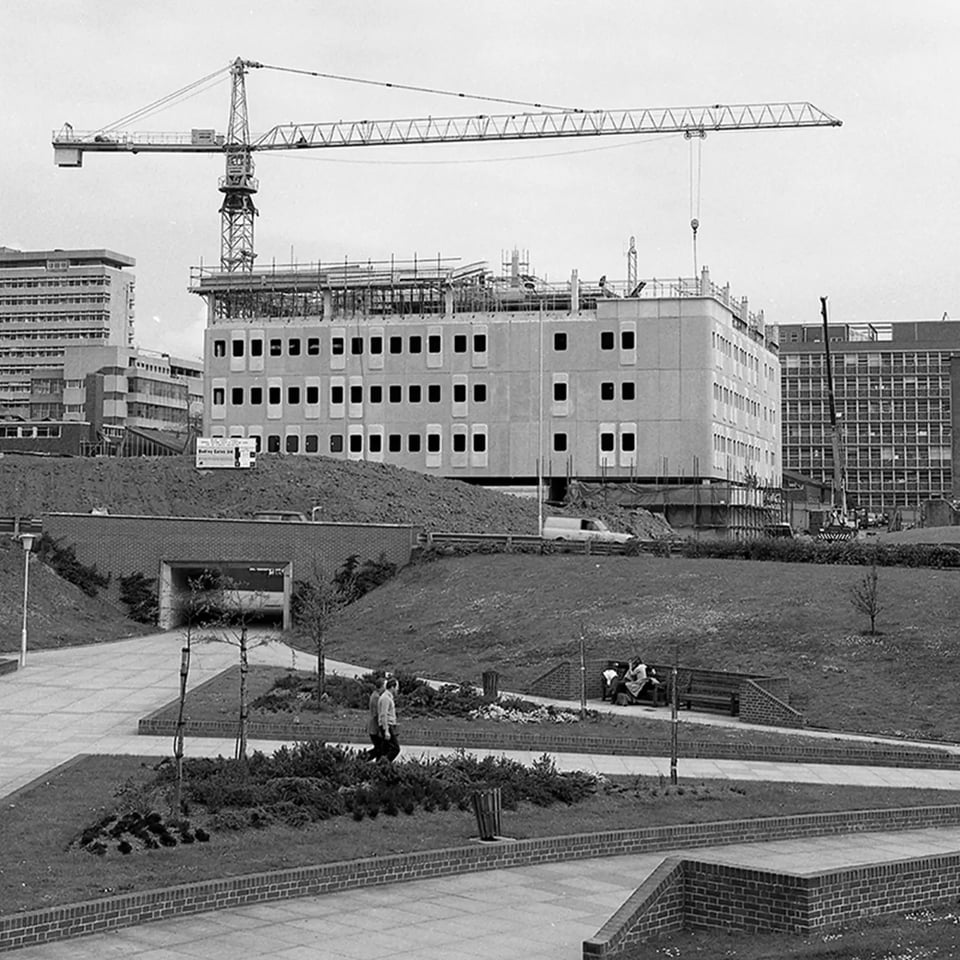Field Notes: Bath fire station, more cinemas + news (14 August 2025)
On Bath's 1930s Fire Station, the ever-multiplying 1930s cinemas in Plymouth and more local news of C20 buildings than you might expect in summer.
It’s too damn hot. And I’m not even in That London.
In July, I asked subscribers whether you’d like two emails a month (a deep dive and this field note), or more (field notes most weeks plus a deep dive). With 60% of the vote, two emails a month just edged it. I’m also doing a contract job for the summer so it felt like a good time to try the different schedule.
My deep dive into Cornwall’s Saltash Library (Royston Summers, 1963) is now live for paying subscribers. I love libraries, and am increasingly smitten by the work of Cornwall County Council’s architects in the early 1960s.
My deep dive into Shepton Mallet’s Amulet (Terry Hopegood et al, 1975) is now free to read for everyone. The Let’s Buy the Amulet campaign to buy the Babycham Brutalist theatre back for the town is running “meanwhile use” events over the summer and has opened their share offer. It’s great to see they’ve brought back the Saturday kids’ matinee.
I’m now working on a deep dive into Our Lady of the Portal and St Piran (MWT, 1973) in Truro. So far I’ve found a classic eccentric Cornishwoman and a master craftsman in dalle-de-verre. I’m currently gathering memories and digging into archives, having visited the site twice this year.
If you’re enjoying the deep dives, you can unlock the current one by upgrading your subscription.
And now onto local stories and news.
Bath Fire Station under threat

Bath and modernism are not words with a strong association. The city of Bath brings up the idea of creamy stone dreaming of the Regency. It’s the Georgian classicism of the Circus (John Wood the Elder, 1764-1768) and the Royal Crescent (John Wood the Younger, 1767-74), harking back to a romanticised Roman occupation of the Baths.
It was the city we ran to when travel restrictions were lifted: only an hour by train, not too crowded, and with a Landmark Trust self-contained flat near the station. We ate out, sitting on a balcony in the 2010 Southgate shopping arcade. That development, scantily clad in Bath stone, has been called “Las Vegas Georgian” in the Guardian.
Of course, that’s just the city’s public face. There are municipal flats from 1969. There’s a whole, self-contained, 1960s university campus drifting across a hillside. But many of these C20 buildings are clad in that same cream stone. As is the building I have on my deep dive list.
Bath-born Alfred J Taylor (1878 to 1938) started to design a new fire station for the city in 1937. After his death his daughter, fellow architect Molly Taylor (1908 to 1988), took over and finished the plans.
The building went into service in 1939. Just enough time for the engines and crews stationed there to get used to it before the Baedecker raids on the city in 1942 that killed 400 people and destroyed 900 buildings. This makes the fire station historic in two ways: as a rare 1930s moderne work by a woman, and as the base from which much of the older city was saved.
There’s just one problem: the bay doors are too narrow for modern fire engines.
Avon Fire and Rescue want to demolish it and build a new one. You can read their plans here.
The C20 Society want it to be saved and have submitted a listing application.
The difficulty here is it’s hard to see how to reconcile these views. Any changes to modernise the building would need to change the bay doors on the front elevation. And, like all good architecture in Bath, the proportions are crucial. And, fundamentally, the Fire and Rescue service need a working building. Modern architecture was built to support the latest in fire fighting technology. But the tech has moved on and the building cannot.
The Bath Preservation Trust think the existing building adds to the conservation area, but new facilities are more important.

The final date for consultation responses is today, 14 August 2025. (Go the the Bath/NES planning portal and search for application 25/02735/FUL.)
I am going to try to get there this year so I can document it before it’s gone.
A tale of two cinemas
Plymouth would very happily take up all the space in this newsletter every time. That’s because it is both a city whose postwar rebuild is substantial and one seeing a heavy investment in regeneration due to the need to support the dockyard.
It’s widely said that was left after the air raids was ripped down by the council. I know this story: I grew up close to Coventry: another phoenix city. Yet the story’s not completely true. Armada Way and the Royal Parade in Plymouth flattened an unforgiving, straight wide march from the railway to the Hoe, but when you step off Abercrombie’s dream of a grid, the old city meets you in all its shabby grandness.
I’ve previously written about the urgent campaign to buy the Royal, a 1930s cinema just across from the midcentury Atheneum (1961, Walls and Pearn) and the Brutalist Plymouth Theatre Royal (1982, Peter Moro). The Save the Royal’s website is now live, as is their crowdfunder.

Just six minutes’ walk from the Royal, on Union Street itself, is the former closed Millenium nightclub. This is also an Art Deco cinema, originally the Plymouth Gaumont (1931, Percy Bartlett and William Henry Watkins). The ever-reliable Cinema Treasures site has more on its steady decline and conversion into the Millenium nightclub. The Nudge Community Builders efforts to bring life back to Union Street are a story I’ve been watching for a few years, so it’s great to see them receiving over £250K from Historic England’s Heritage at Risk Capital Fund. This will go towards a restoration project to repair the front and revamp part of the derelict ground floor into a rentable workshop for the community.

Having written this, I now fully expect a third 1930s cinema rescue bid to materialise somewhere in Stonehouse within the next two months.
Other local news of C20th buildings
In which I fight my way through local ad-laden news sites to find stories about twentieth century buildings and related topics.
Oh, I do like to be beside the seaside
Historic England are running a summer campaign, Seaside Stories, for their Missing Pieces project. This aims to crowd source photographs of listed sites and properties across the country, expanding what is available to see on their website. A lot won’t be C20 buildings or sculptures, but if you’re gadding about the coastline this summer, it’s a nice little puzzle.
A friendly society
John Boughton, of Municipal Dreams, has been round this way. Including a trip to Tolpuddle in Dorset, where a set of six 1930s workers cottages are a tangible reminder that the West Country brews rebellion alongside our cider. He shred this lovely blogpost about the construction of the cottages. And here’s his thread on Bluesky about the 1930s to 1960s rural council housing at Branscombe, Devon.
Toll stories on the Tamar Road Bridge
More recent workers’ history has been captured at the Tamar Road Bridge (Mott, Hay and Anderson, 1961) where displays along the walkways and bikepaths offer the chance to hear the voices of the people who worked in the tollbooths. https://www.fotonow.org/news/crossing-lives-celebration-event/
In brief
Not one but two news items about the upgrading of Plymouth’s Tinside Lido (John Wibberley, 1935). I’m hoping at some point their PR person gets back to me about visiting it outside opening hours so I can do a deep dive. On it, not into it.
The former Borough of Poole Municipal Building (L Magnus Austin, under Borough Surveyor E J Goodacre, 1931-32) has been sold. It’s currently part of Historic England’s Missing Pieces project, based on its listing.

The University of Plymouth’s Babbage Building (unknown, 1973) was built back when the place was Plymouth Polytechnic. It’s glass-reinforced panelling was allegedly to mimic the punch cards used in early computing. It was then reclad in the mid-1990s and lost its distinctiveness. The building has now been retrofitted, keeping the 1970s frame but altering the spaces and energy efficiency. It’s also been hugely extended. This work, by Feilden Clegg Bradley Studios, has been shortlisted in this year’s AJ Retrofit & Reuse Awards in the Positive addition (£2 million and over) category.
Finally, if you love midcentury department stores, the former Debenhams (G Baines, 1938 and 1959) in Taunton is for sale. The current owners had put in a planning application to demolish and replace with apartment blocks. This was objected to and since the application was withdrawn the building has sat empty. Full sale details, including interior shots, on the Alder King website. If you have £1.75 million.
If you know of an event or news item you think I should know about, you can contact me on Bluesky.
If you’re enjoying this newsletter, feel free to share it with others.
If someone has sent you this, you can subscribe below.
A free sub will get you the weekly field notes and notice that a deep dive has been published.
A paid sub (£3 a month) will unlock the deep dives early, plus occasional bonus content and the warm knowledge that you’re supporting the project.